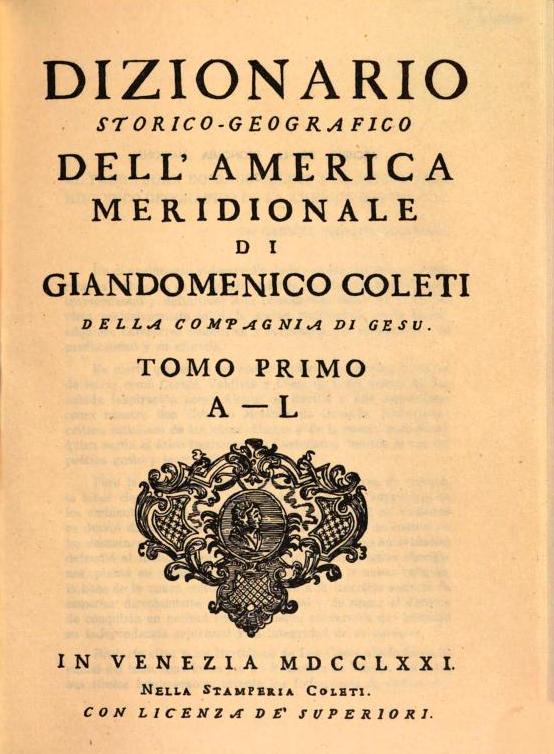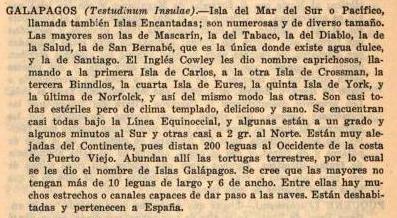GALAPAGOS (Testudinum Insulae). -- Isla del Mar del Sur o Pacífico, llamada también Islas Encantadas; son numerosas y de diverso tamaño. Las mayores son las de Mascarín, la del Tabaco, la del Diablo, la de la Salud, la de San Bernabé, que es la única donde existe agua dulce, y la de Santiago. El Inglés Cowley les dio nombre caprichosos, llamando a la primera Isla de Carlos, a la otra Isla de Crossman, la tercera Binndlos, la cuarta Isla de Eures, la quinta Isla de York, y la última de Norfolck, y así del mismo modo las otras. Son casi todas estériles pero de clima templado, delicioso y sano. Se encuentran casi todas bajo la Línea Equinoccial, y algunas están a un grado y algunos minutos al Sur y otras casi a 2 gr. al Norte. Están muy alejadas del Continente, pues distan 200 leguas al Occidente de la costa de Puerto Viejo. Abundan allí las tortugas terrestres, por lo cual se les dio el nombre de Islas Galápagos. Se cree que las mayores no tengan más de 10 leguas de largo y 6 de ancho. Entre ellas hay muchos estrechos o canales capaces de dar paso a las naves. Están deshabitadas y pertenecen a España.
Google Translation
GALAPAGOS ( Turtle Islands ). - Island of the South Sea or Pacific, also called Enchanted Islands; they are numerous and of various sizes. The largest are those of Mascarín, that of Tobacco, that of the Devil, that of Health, that of San Bernabé, which is the only one where there is fresh water, and that of Santiago. The English Cowley gave them fanciful names, calling the first Isle of Charles, the other Isle of Crossman, the third Binndlos, the fourth Isle of Eures, the fifth Isle of York, and the last of Norfolck, and so on the others. They are almost all sterile but with a temperate, delicious and healthy climate. They are almost all under the Equinoctial Line, and some are at a degree and some minutes to the South and others almost at 2 deg. to the north. They are very far from the Continent, as they are 200 leagues west from the coast of Puerto Viejo. Terrestrial tortoises abound there, which is why they were given the name of the Galapagos Islands. The largest are believed to be no more than 10 leagues long and 6 wide. Between them there are many straits or channels capable of giving way to ships. They are uninhabited and belong to Spain.

